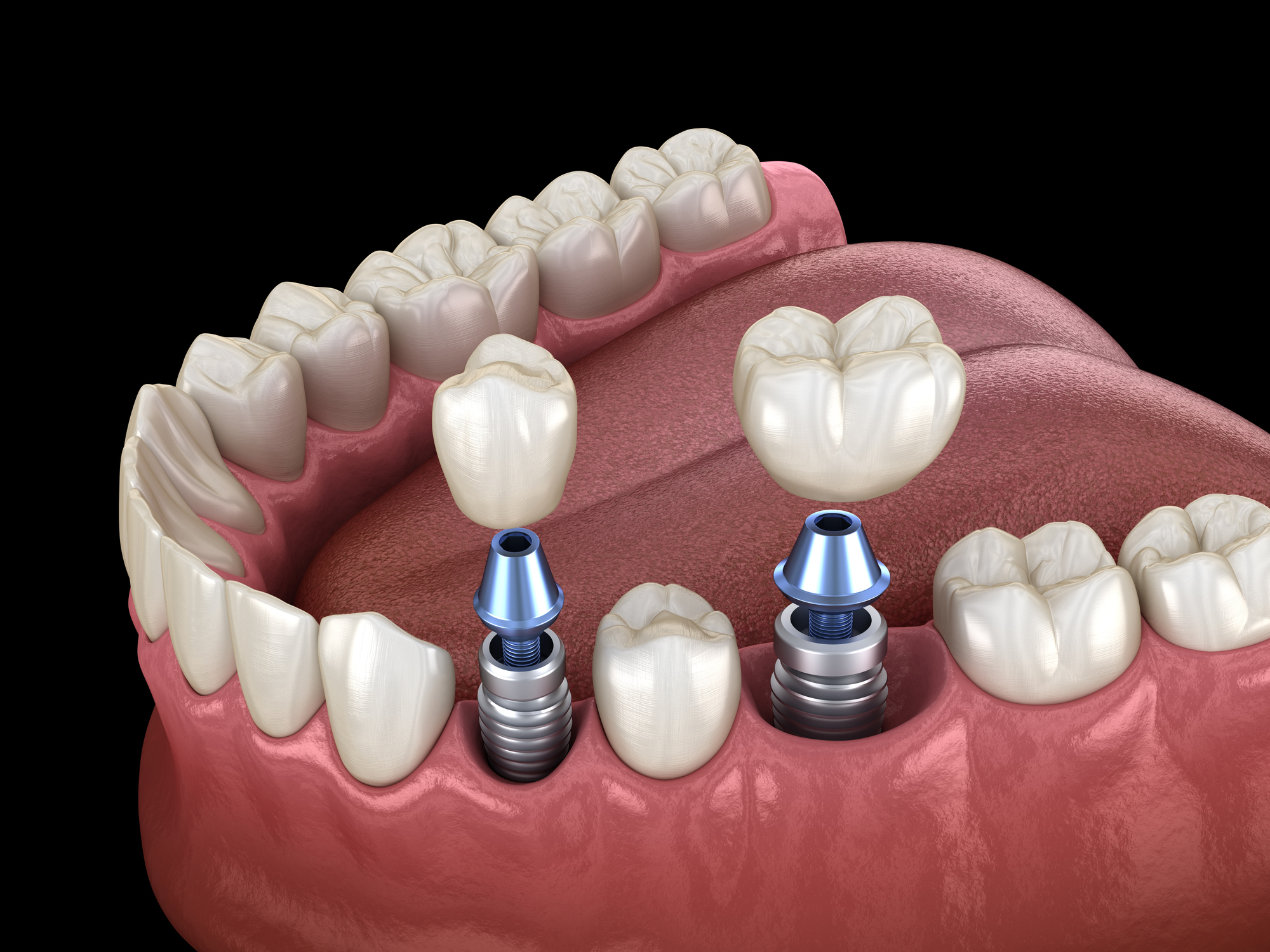The 20-Second Trick For Dental Sense
The 20-Second Trick For Dental Sense
Blog Article
Dental Sense Can Be Fun For Anyone
Table of ContentsNot known Details About Dental Sense The Buzz on Dental SenseNot known Facts About Dental SenseHow Dental Sense can Save You Time, Stress, and Money.
are medical devices surgically implanted right into the jaw to recover a person's capacity to chew or their look. They provide support for man-made (fake) teeth, such as crowns, bridges, or dentures. When a tooth is shed because of injury or condition, an individual can experience difficulties such as rapid bone loss, defective speech, or changes to chewing patterns that cause pain.Oral implant systems consist of a dental implant body and dental implant abutment and might also include an abutment addiction screw. Wisdom tooth cavity. The oral implant body is operatively put in the jawbone instead of the tooth's origin. The oral implant joint is normally connected to the implant body by the abutment addiction screw and prolongs via periodontals right into the mouth to support the attached synthetic teeth
(https://www.gaiaonline.com/profiles/dentalsense1/46992240/)Framework of The Dental Implant System selecting oral implants, speak to your oral supplier about the possible advantages and dangers, and whether you are a prospect for the procedure. Points to take into consideration: Your overall health is an important consider figuring out whether you are a great prospect for oral implants, for how long it will take to heal, and the length of time the dental implant might stay in area.
Smoking cigarettes may affect the healing process and decrease the long-lasting success of the implant. The recovery process for the implant body might take numerous months or longer, throughout which time you typically have a short-lived abutment in place of the tooth. the dental implant treatment: Thoroughly adhere to the oral health guidelines offered to you by your oral supplier.
Unknown Facts About Dental Sense
Implant failure can lead to the demand for another operation to fix or replace the implant system. Restores the ability to chew Restores cosmetic appearance Helps keep the jawbone from reducing due to bone loss Preserves the wellness of the bordering bone and gums Assists maintain nearby (nearby) teeth steady Boosts high quality of life Damages to bordering all-natural teeth during dental implant positioning Injury to the surrounding tissues throughout surgical procedure, such as sinus opening Injury during surgical treatment (for instance, fracture of bordering jawbone) Inadequate function, such as seeming like the teeth do not bite together normally A sensation that the tooth hangs or twisting in position resulting from an abutment screw loosening Implant body failure (looseness of the implant body) as a result of systemic infection, which might be more probable in people with unrestrained diabetics issues due to local infection in bone and gums sustaining the implant body because of postponed healing, which may be more probable in patients who smoke Difficulty cleaning the periodontals around the implant, leading to bad oral health Neglected periodontal condition Post-surgical feeling numb as a result of nerve impingement or damage Constantly alert healthcare suppliers and imaging technicians that you have dental implants before any kind of magnetic resonance imaging (MRI) or x-ray treatments.
FDA is not knowledgeable about any kind of damaging events reported for MRI or x-ray treatments with dental implants. Oral implants systems are typically constructed from products that comply with international agreement criteria of the International Company for Standardization (ISO) or ASTM International. These requirements have details of what makes a secure material.

An oral implant is a structure that replaces a missing out on tooth. With screw-like tools, the cosmetic surgeon inserts an implant into the jawbone, and it acts as an anchor for a man-made tooth, called a crown.
Some Known Details About Dental Sense
Some individuals are not qualified for oral implant surgery. It is for oral doctors to run on individuals with: severe illnessuncontrollable metabolic diseasebone or soft cells illness or infectionIf these issues are solved, a person can have the surgical treatment. In, dental specialists abstain from operating people with: If people with any of the above go through oral implant surgical procedure, there is a greater threat of the dental implant failing.

Oral implant surgical procedure is a customized procedure. It's not the exact same for everybody. The adhering to provides a basic summary of what you can expect your dental practitioner, dental doctor, periodontist or prosthodontist to do: Place the dental implant operatively. Give you time to recover. Connect the blog post and final crown, bridge or denture.
Next, your doctor will very carefully place the oral implant right into your jaw. Your doctor will rearrange your periodontals and shut the cut with stitches. If your dental implant is near the front of your mouth, your dental practitioner will make a temporary tooth for you to use up until you recover. look at here In this way, you won't have a gap in your smile while you recover.
9 Easy Facts About Dental Sense Shown
Your supplier can inform you what to expect in your situation. During the healing phase, your jawbone must fuse to the dental implant. This process, called osseointegration, is critical for security and long-lasting success. This process can take anywhere from three to 9 months. Sometimes, it might take much longer.
As soon as your dental implant heals, your dentist can affix the abutment (little port article) and your final remediation (crown, bridge or denture). This normally takes about one hour to complete and might require a second small surgical procedure. You should not feel any type of discomfort throughout your dental implant treatment since your provider will use medicine to numb your gums.
Report this page